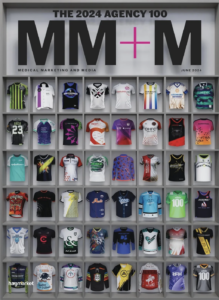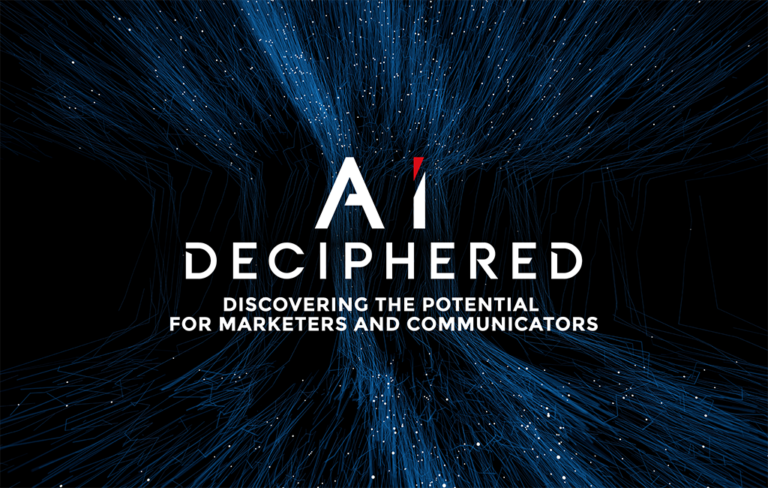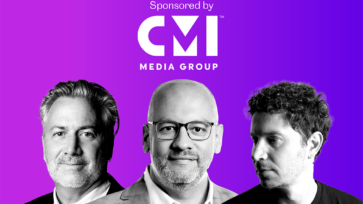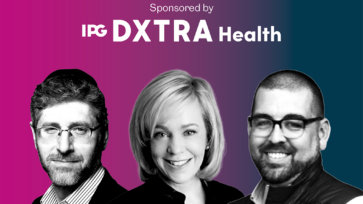According to the Association of American Medical Colleges, little is known about women’s health because women have historically been excluded from clinical trials. It wasn’t until 1993 that the FDA reversed its guidance and officially mandated the inclusion of women in research. Thirty years later, there’s still a huge gap of knowledge when it comes to women, women’s health and health disparities. Despite representing 51% of the U.S. population, women only account for 40% of participants in clinical trials for diseases that most affect them. Studies have also shown that across chronic pain to chest pain to ER visits, women’s health concerns are more likely to be dismissed by healthcare providers (HCPs) than men’s are.
At a closed-door roundtable following MM+M’s Women of Distinction event, senior reporter Lecia Bushak sat down with a group of female leaders to discuss how to strengthen female representation in medical research, build cultural awareness in marketing and bring up the next generation of female leaders.
Panelists offering insights into how to affect change were Lauren Amodeo, managing director, rare, ConcentricLife; Maia Arnold, SVP, scientific strategy, Spectrum Science; Sara Beachler, SVP, group creative director, ConcentricLife: Aarti Bijlani, VP, marketing lead, sleep business unit, Jazz Pharmaceuticals; KC Dickerson, EVP, head of engagement, ConcentricLife: Shivani Garg, senior marketing manager, Pfizer; and Karen Todd, VP, global brand marketing, Kyowa Hakko USA.
Advocating for women’s health
Education is essential to boosting female representation in medical research. “It isn’t only about getting the data, but educating doctors at all stages, from med school all the way up to clinical practice, then also educating patients on conditions and fostering those conversations with their doctors,” Amodeo said.
Empowering women to advocate for themselves and understand their health is crucial. Pharma marketers can facilitate more productive conversations by providing tools “to capture the information, think about the questions to ask and record them and, most importantly, for the healthcare provider to be able to sit and answer,” Bijlani said.
There is often a disconnect between female patients and their HCPs when it comes to communication. Part of the issue is that patients retain just 10% of what is said in a doctor’s visit, Bijlani said. Brands can help patients be better prepared for these conversations by suggesting takeaways and questions for visits, Todd noted. Better communication with doctors at all levels, including those in community clinics, will help empower and educate more women as well, Arnold added
Peer-to-peer education can help disseminate information to broader audiences, Garg noted. As more patients and doctors can be found on social media, it’s important for marketers to “give content where they are to make some of this breakthrough communication,” Dickerson said.
The good news is conversations about women’s issues are much more prevalent today. “It’s much more common to hear things on social media or in podcasts or in traditional media — we’re talking about periods, we’re talking about miscarriages, we’re talking about menopause,” Beachler said.
Approaching female customers
Women are not a monolith; however, they tend to be lumped together in one big group when it comes to brand messages or campaigns. Marketers can learn to craft a more granular approach by digging into the data.
“Figure out the nuances of their personality and what information they have, so that we can have targeted, specific conversations based on where somebody is in their journey at that moment and what they care about,” Dickerson said.
Market research can help brands find pockets of women of different ages and demographics. “It really comes down to understanding the population you’re trying to get at and what it is that makes them tick and that’s going to make them take action,” Arnold said.
Having more diversity in the room has made a difference in reaching diverse audiences. “These diverse points of views and perspectives allow us to pressure-test, put what is out there in the best way possible, but also continue to iterate,” Beachler explained.
Incorporating AI in healthcare
AI has the potential to expedite positive change in the industry by “streamlining or building efficiencies around certain tasks, which then let people do that deep focus work,” Beachler said.
The technology is being used for content generation and translating complex scientific concepts into simpler ones, Arnold said. It has also been used to expedite the regulatory process by checking for words that are not permitted, Garg added. And it can even run through transcripts of patient recordings to detect words that trigger discontinuation, Bijlani said. By translating messaging for different languages or audiences from a scientist to a fifth grader, it can help craft more diverse campaigns, Todd noted.
“Using AI to tailor a conversation to a very specific target is interesting as we think about dynamic target and specification of message,” Amodeo said. However, keep in mind that “whether it’s for creative or trials or messaging, there always has to be a proper check from a human with a reference on top of it.”
For example, Garg shared how a “perfect” translation of a website from English to Spanish needed to be reviewed by her Spanish-speaking colleagues to become more colloquial and accessible. “We talk about the difference between translation and transcreation,” Dickerson said. “You can’t just state something the way that you would in English in every other language. There are nuances or colloquialisms that are specific to languages, and as we’re building multilingual content, we must stop and consider those things.”
As AI is incorporated in workflows, it’s important for brands to ensure diverse data inputs to avoid biases. “We have to make sure what’s going into the AI engine is diverse enough to represent a diverse population in terms of what comes out,” Dickerson said.
There is also an opportunity for companies to feed data into AI that better represents the patient population. “As marketers, in the creative that we’re putting out there, we can increase the pool of information that AI has to pull from so then when it spits something out, hopefully it’s more diverse in the long run,” Arnold said.
Bringing up the next generation
A significant part of boosting female representation in healthcare is mentoring the next generation of leaders. While the post-pandemic hybrid work environment has been positive in many ways, Bijlani noted that “there’s so much coaching and mentoring and learning that happens in a room full of people around a conference table or in a hallway conversation.” It’s important “for Gen Z to have ways to learn within the office, within their teams, with colleagues.”
Mentoring this generation starts with authenticity. “As female leaders, we need to tell them about our experiences, give them real feedback in a timely way, but also be transparent in how it is that we’re communicating about some of these topics and being open to discussion,” Dickerson said.
In addition to employees, pharma brands need to consider how to reach the next generation of doctors. “When you think about marketing to a physician, you think about a rep-triggered email (RTE) or something physical that you might hand to them,” Garg said. “A lot of our future doctors get all of their information on podcasts.”
That’s why it’s so important to “provide those multiple channels for education and information,” Todd said. Pharma brands have to “meet people where they are” Beachler added. “If Gen Z goes to social media for information, how do we lean into that and create that authentic, relatable content for them there?”
The younger generations are passionate about social issues including gender equality, racial equity and LGBTQ+ rights. As a result, workplaces are helping to amplify their voices through resource groups and opportunities to “show yourself, talk about real personal experiences, bring it to work and have a community to talk about it with,” Dickerson said.
Allowing space for these initiatives is beneficial not only for employees but the company as well. “If people talk about their culture, if people share about their heritage and feel like they are part of the community, they also bring their best selves, they feel like they belong, they’re going to stay with the organization,” Bijlani noted.
The younger generations demand it as consumers and employees. “We know that they will align themselves with brands and companies that match their own values,” Beachler said. “They’re pushing the status quo in terms of work, which is a benefit to everyone, not just their generation.”
To Garg, “It also translates into trust. If I believe in their values, then I also believe that what they are going to market and what they’re going to tell me in their messaging also aligns with my values,” she concluded.
To view the entire ConcentricLife roundtable session, click here.






